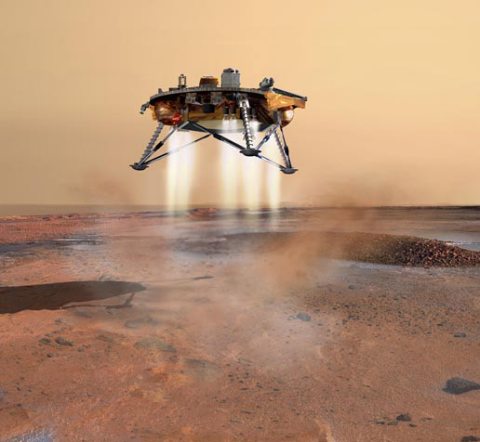NASA's live feed vs. Discovery Science: And the winner is...

I just watched two simultaneous feeds of the NASA's Phoenix rover landing and its entry into the atmosphere of Mars. One feed came courtesy of NASA TV on the Web. The other was more produced via Discovery's science channel.
The winner: NASA TV. Just hand me the live feed when the even
However, this Phoenix rover (gallery right) bake-off shows the limitations of television. First, there's the commercial breaks. Then there's the need to justify why talking heads are around.
As the Phoenix lander hit the Mars atmosphere Discovery's crew was talking over the drama--the announcements within mission control. These folks were just trying to explain it, but anyone watching this Phoenix landing had done their homework in advance. Eventually, Discovery Science figured out how to stay out of the way.
Watching the two feeds simultaneously was a bit strange--especially since these two live feeds weren't synchronized as far as I could tell. But there is the model of the future waiting to be had for television.
The model: Talking head free TV. What if you just got a feed of an event? No color commentary. No pregame show. Just a video camera at the 50 yard line. If I could get that for the NFL.com I'd probably pay for it.
This raw feed model wouldn't work for everything, but for sports it could be huge. Once Phoenix landed I appreciated the more packaged Discovery Science approach since we're waiting for something to happen. The live NASA TV doesn't have much to offer at this point.